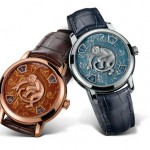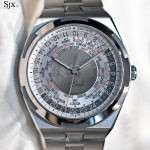Hands On: Vacheron Constantin Métiers d’Art “Tribute to the Celestial”
Refined, different, and unexpectedly sensible in price.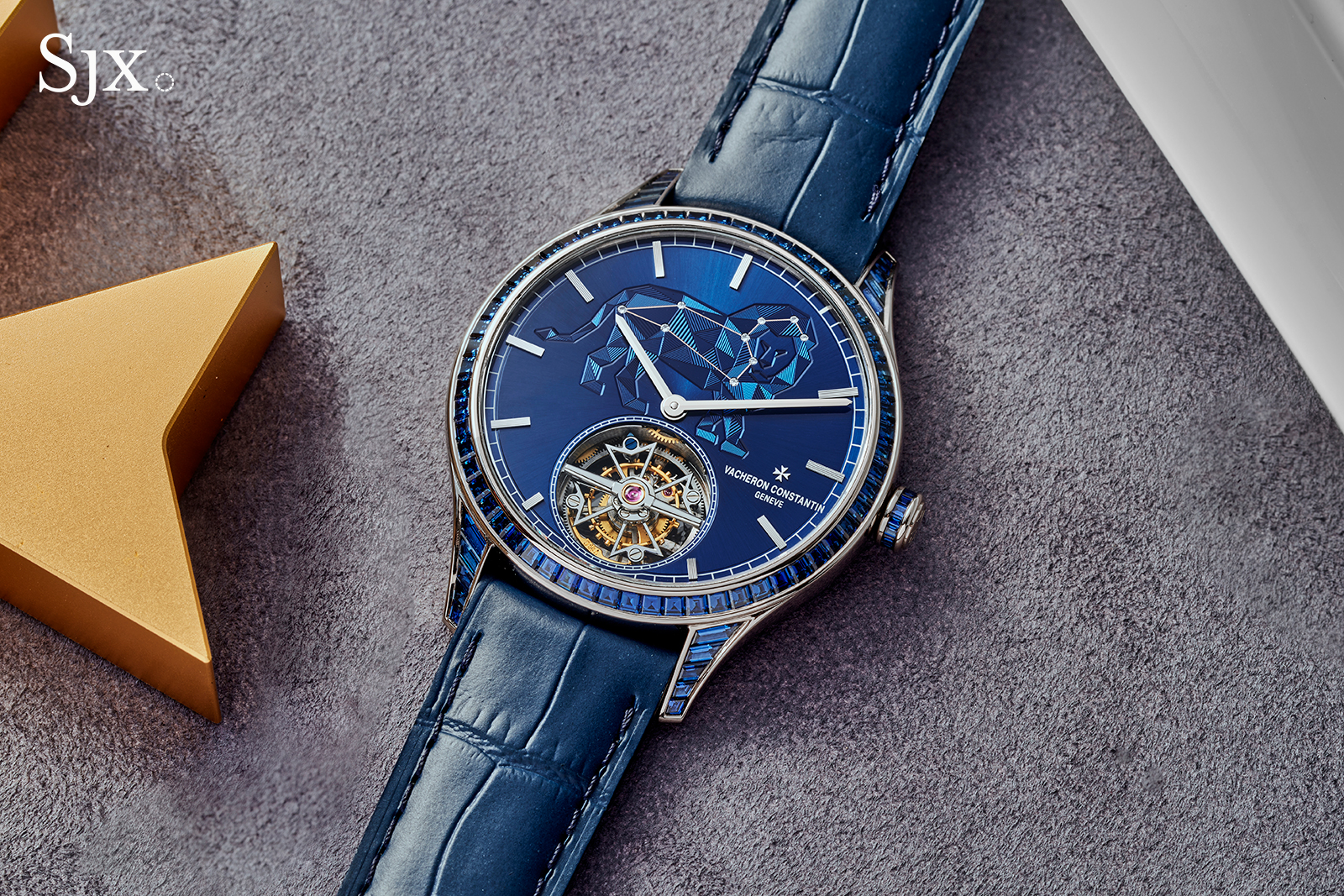
Long a pillar of Vacheron Constantin’s line-up, Métiers d’Art has usually been about figurative, decorative, and classical watches, with traditional motifs and techniques being a recurring theme. The Métiers d’Art “Tribute to the Celestial” is, however, different in style from the usual Métiers d’Art offers, although its distinctive look is inspired by a one-off grand complication from 2021.
The Tribute to the Celestial is a combination of familiar elements, but executed in a surprising way. It’s centred on traditional techniques, namely the hand guilloche dial and gem-set case, but modern in approach and aesthetics. The palette is largely blue and almost monochromatic, while the guilloche forms a geometric, polygonal motif.
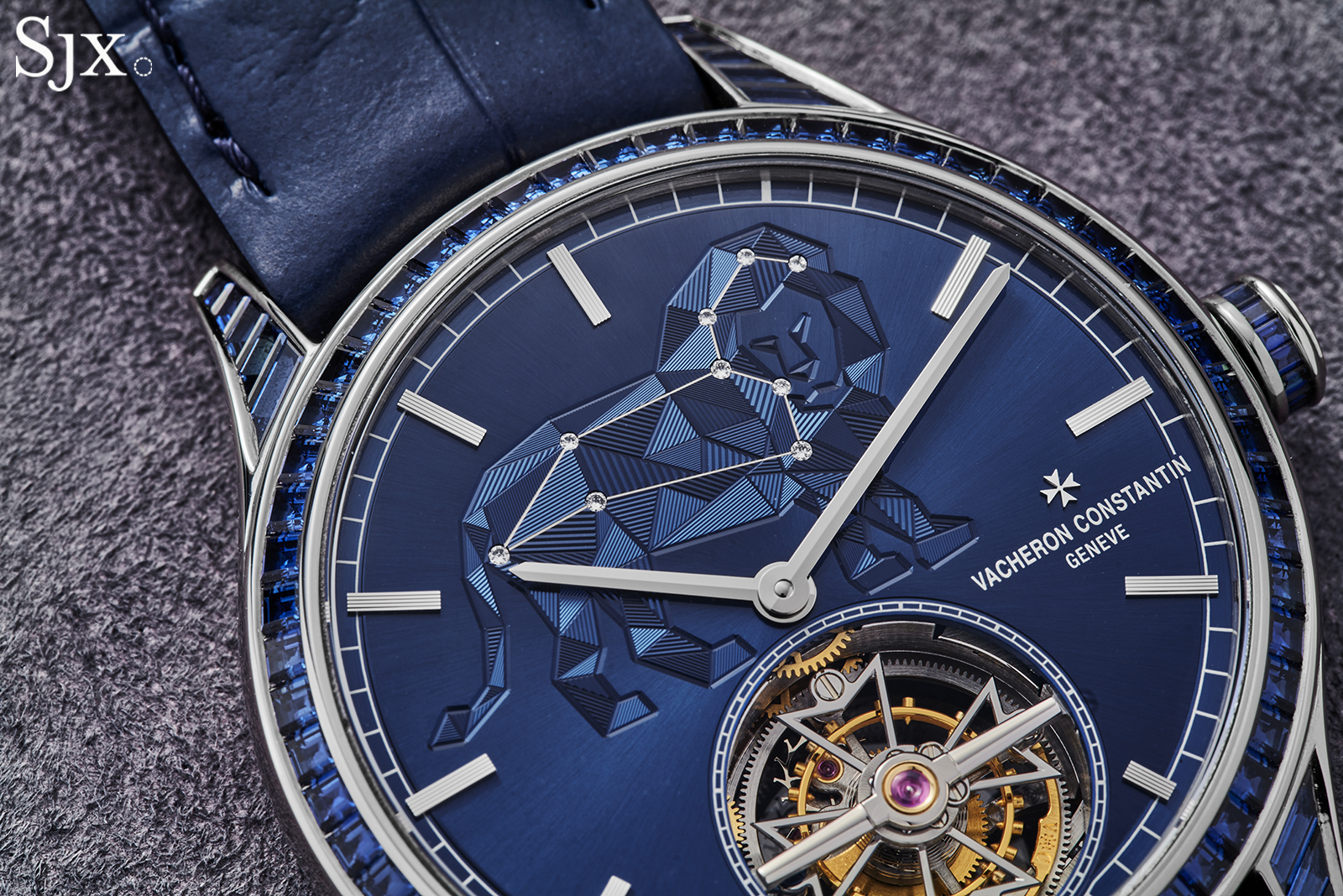
Initial thoughts
At a distance, the Tribute to the Celestial is not what you expect. Across a room, it looks like a shiny, all-blue watch that could be ceramic or another contemporary material. It also doesn’t reveal much detail. But up close the Tribute to the Celestial shows off lots of refined detailing; it’s a double dose of metiers d’art, engine turning and gem setting.
The primary metiers d’art on the Tribute to the Celestial is the guilloche on the dial that is done by hand in-house at Vacheron Constantin’s engine turning workshop. Instead of the common guilloche found on many watches, this employs straight lines at different angles to create a polygonal motif that forms a zodiac symbol, illustrating the versatility of an old-school straight-line engine.
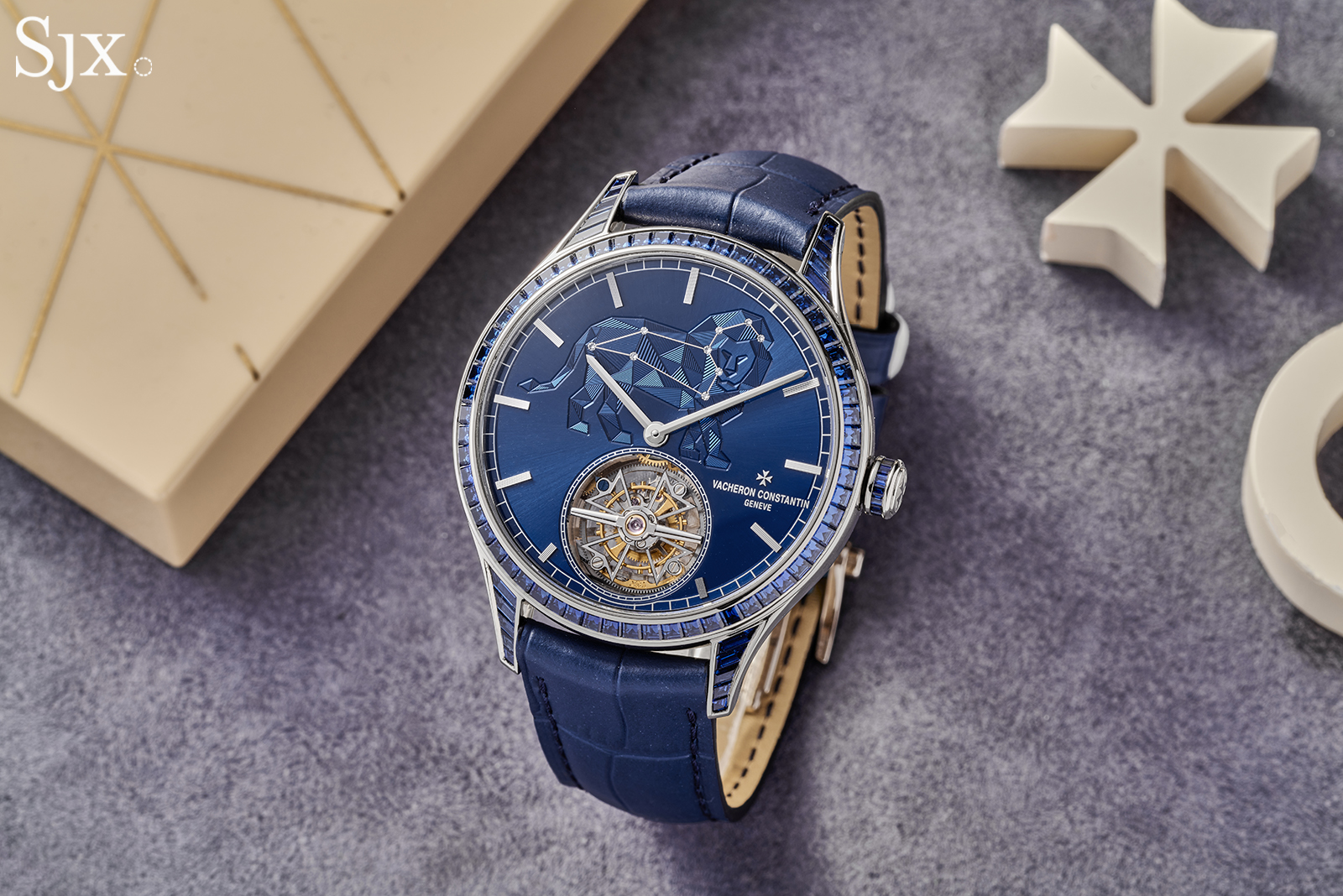
The guilloche is subtle at arm’s length, and surprisingly, even the sapphires are. The case is set with 96 baguette-cut sapphires – a substantial number and weight of gemstones that exemplify another kind of artisanal craft. But surprisingly the watch is far from “bling”, it is relatively discreet and also very blue. The case sides are not set with sapphires, and look a little naked.
The design is actually derived from a one-off creation from 2021, the Les Cabinotiers Minute Repeater Tourbillon Sky Chart Leo Constellation Jewellery Watch. The earlier watch was similar in style, but much larger, more complicated, and way, way more expensive.
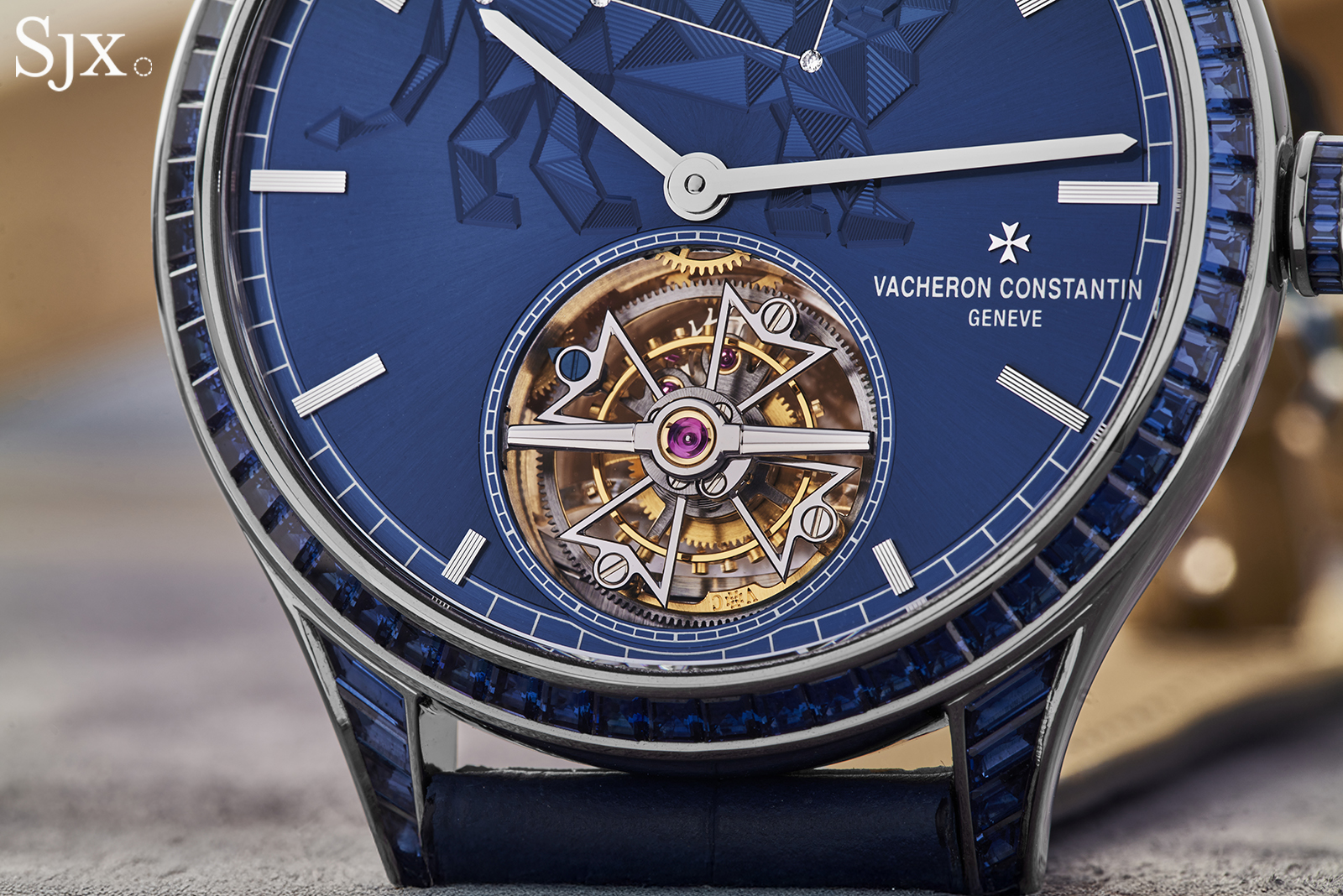
Movement wise, the Tribute to the Celestial is equipped with the familiar cal. 2160 that’s also found in several other Vacheron Constantin tourbillon models.
The cal. 2160 is mostly found in entry-level tourbillon models, like the FiftySix Tourbillon and Overseas Tourbillon, bualso in a handful of highly complicated watches. It’s a still a high-end, industrial-haute horlogerie calibre that lives up to the brand name. The peripheral rotor is a nice touch, and the tourbillon assembly is impressively hand finished.
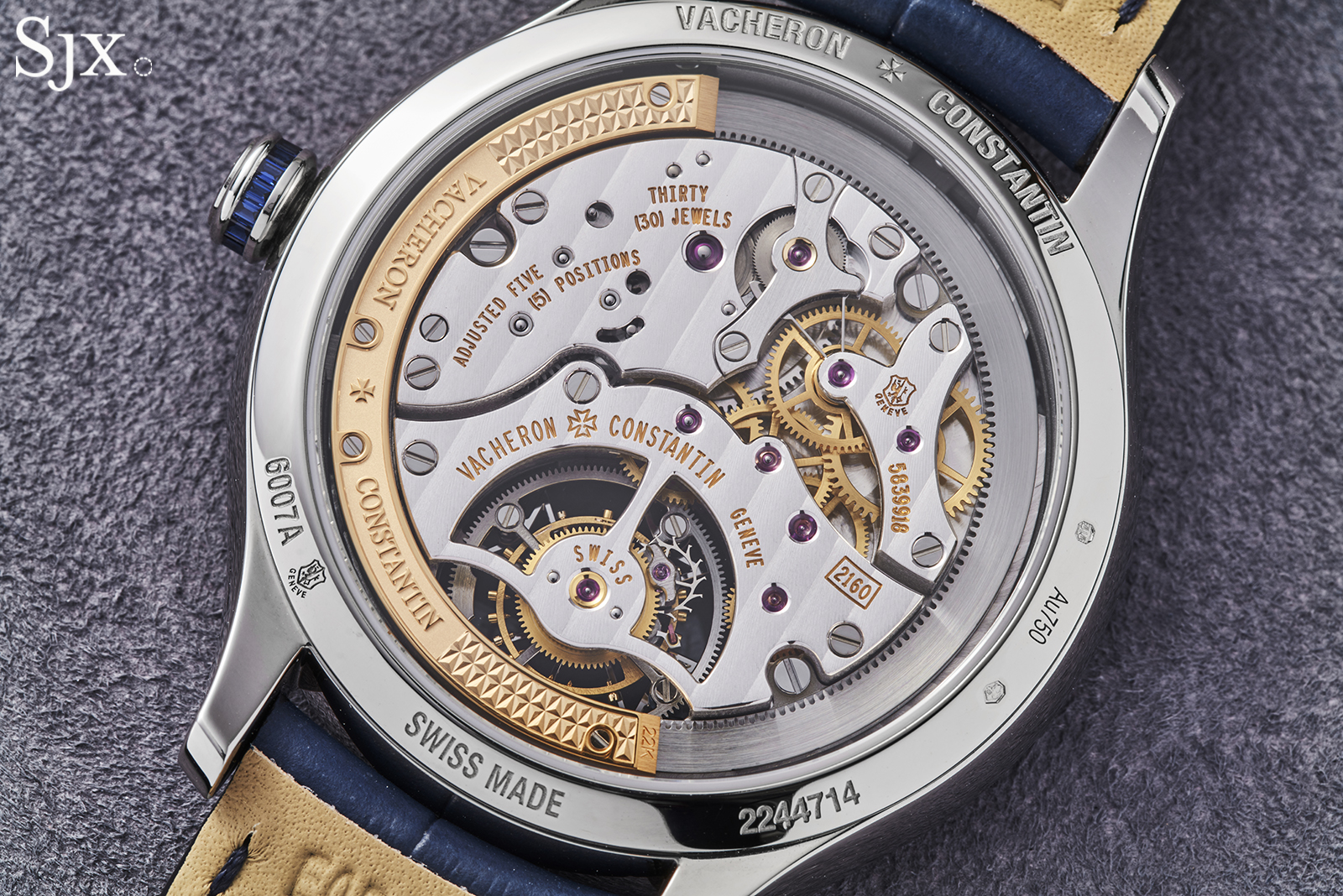
The Tribute to The Celestial does well in terms of quality and execution. I have to think hard to find something amiss in terms of its tangible attributes.
That is, except for the dial. Although the quality of guilloche is excellent regardless of version, the design of each zodiac is uneven, at least in my eye. Some of the zodiac emblems are more attractive than others. Aries, Scorpio, and Pisces, for example, are beautifully executed.
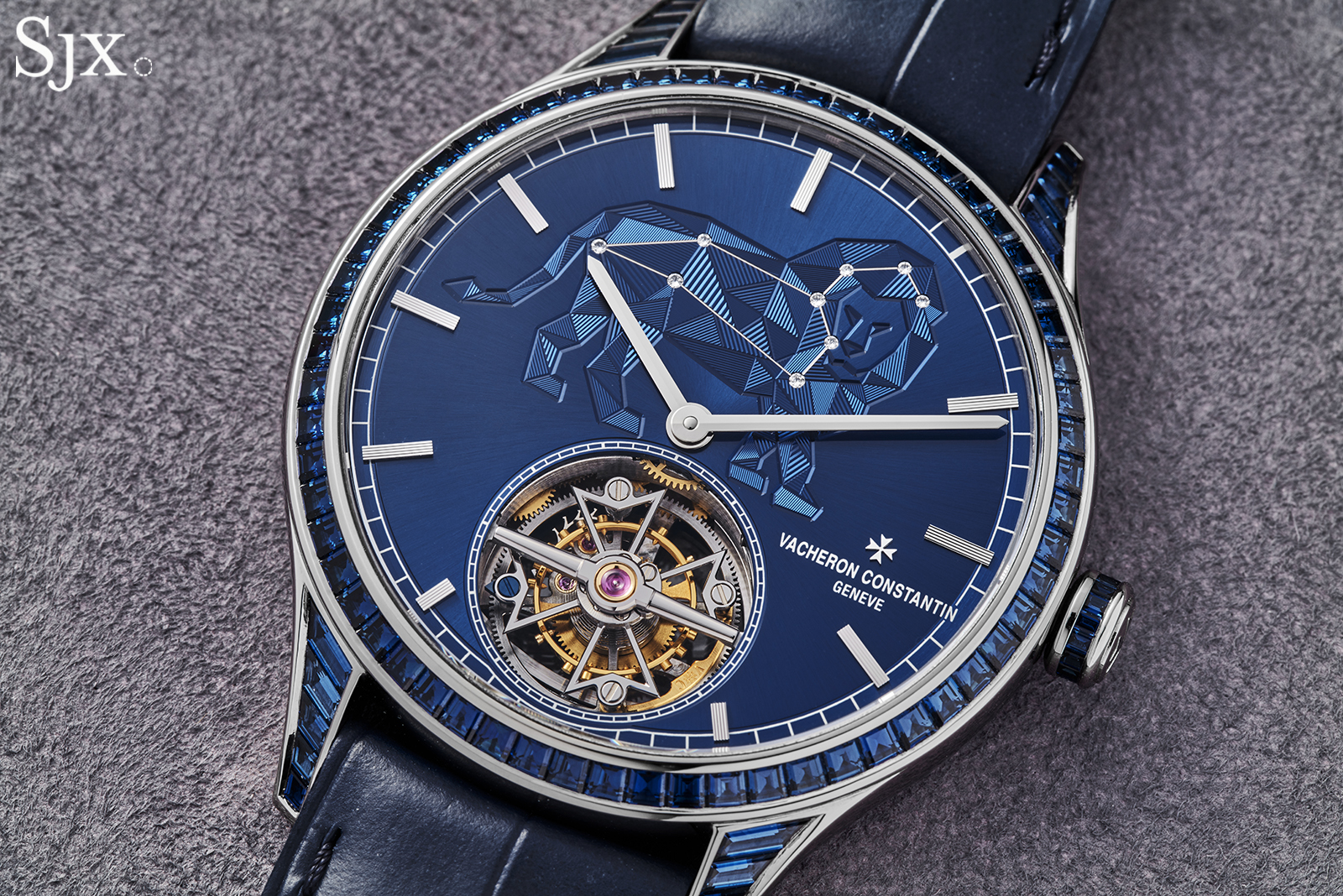
Many of Vacheron Constantin’s watches are appealing for various reasons, but rarely are they priced well. The Tribute to The Celestial is priced well, almost to the point of being a value buy, at least in its category.
The retail price of about US$260,000 brings a tourbillon movement of solid quality, a good carat-weight of baguette-cut sapphires, and the guilloche dial that’s engine turned by hand. It’s still a big number, but relative to the overall price index of the luxury watch market, it is reasonable. And that is especially the case when compared with its 2021 inspiration.
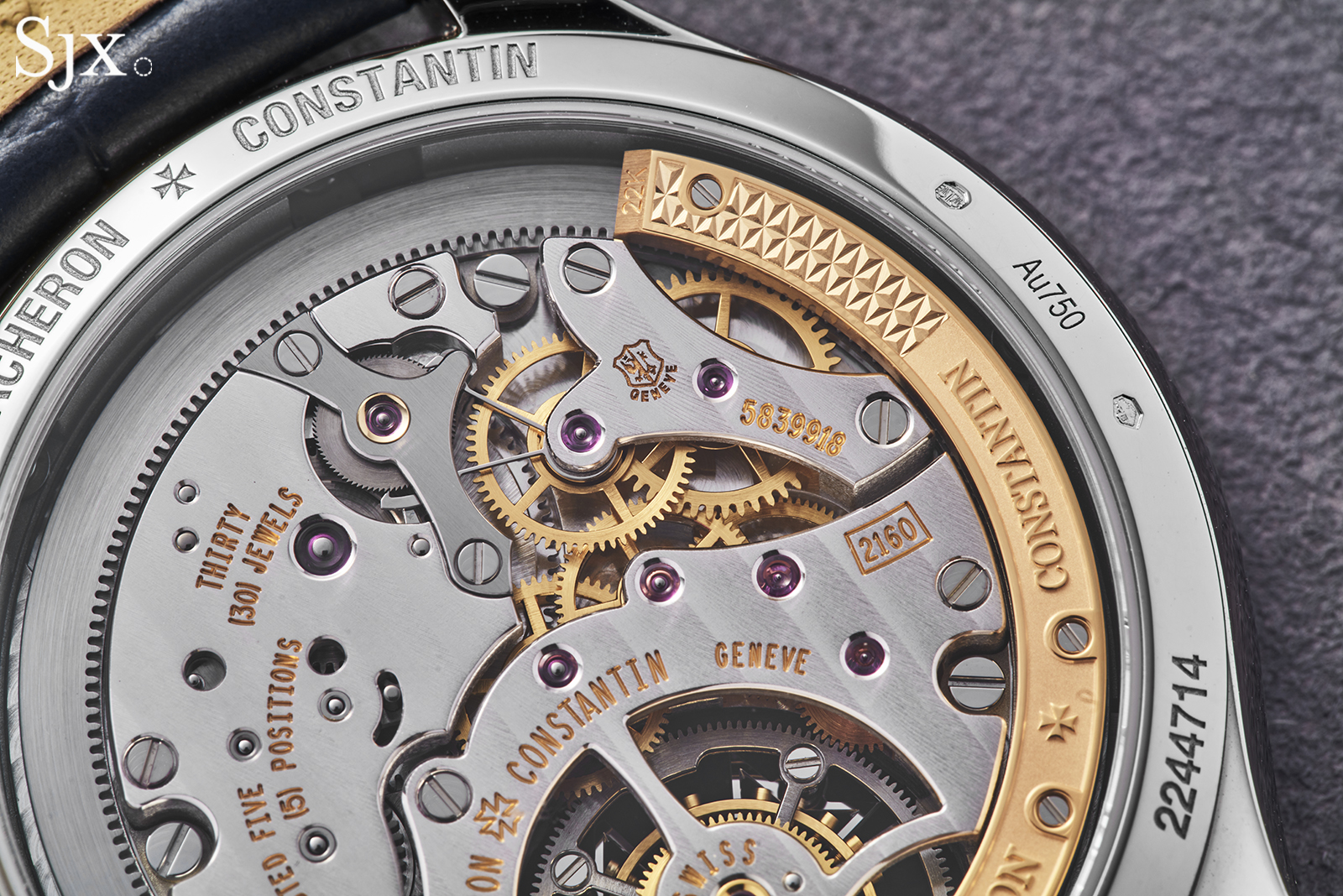
Fine crafts
The design and theme of the Celestial were first employed on the Les Cabinotiers Minute Repeater Tourbillon Sky Chart Leo Constellation Jewellery Watch, a unique creation for an Asian client that premiered in 2021.
In the vein of past Vacheron Constantin grand complications, the Leo Constellation was double faced with a star chart on the back, and a minute repeater inside. The large, 45 mm case – it measured over 15 mm thick – was set with blue sapphires.
The Leo Constellation was large and expensive, with a price tag well into seven figures, while the new Celestial is wearable and affordable, relatively speaking.
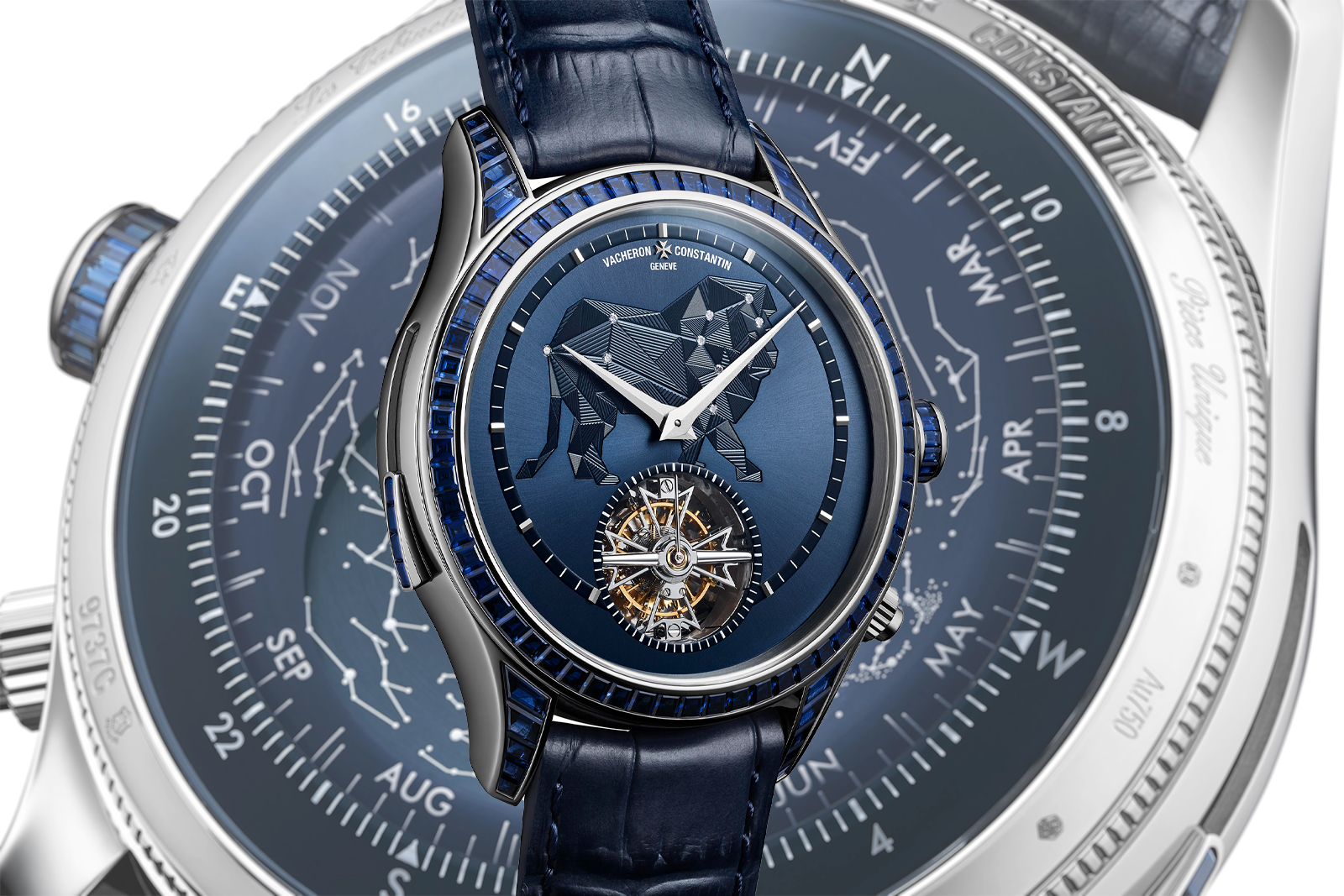
The Les Cabinotiers Minute Repeater Tourbillon Sky Chart Leo Constellation Jewellery Watch of 2021. Image – Vacheron Constantin
While the Leo Constellation was a single watch depicting the client’s zodiac sign, the Tribute to the Celestial is made up of 12 variants, each depicting one zodiac symbol. All dials are finished in the same way – traditional guilloche for the zodiac symbol, plus radial brushing and a metallic blue treatment. But not all of the zodiac symbols are equally appealing.
Aside from those mentioned above, Sagittarius and Libra are amongst the best looking. On the other hand, Leo looks like a bit like a large dog. In fact, it reminds me of a Tibetan mastiff, a breed of dog that is often groomed to look like a lion.
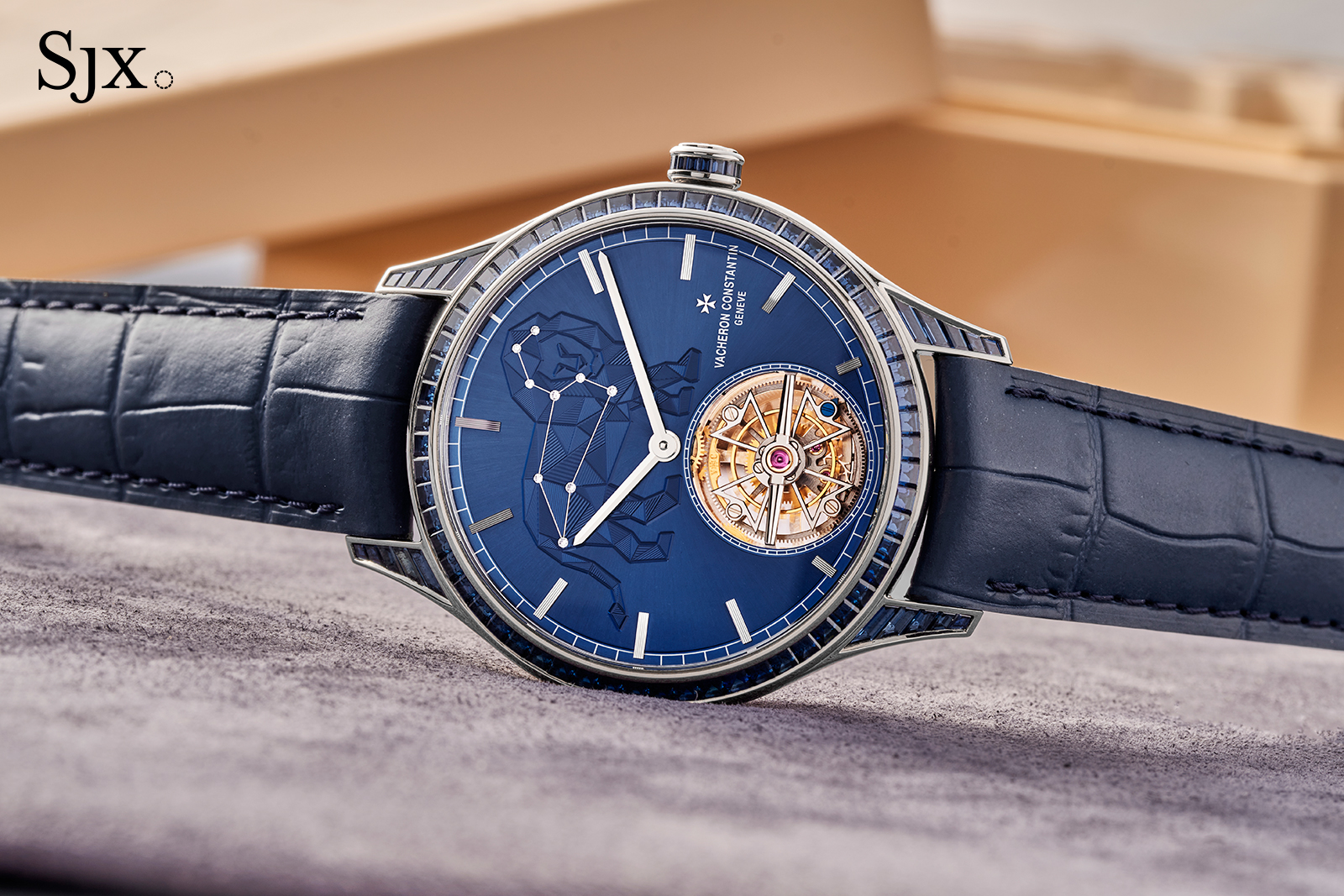
The guilloche is performed in the traditional way: a hand-operated straight-line engine that engraves lines on the dial while the guillocheur controls motion and pressure manually. Engraved one at a time, the lines then form the zodiac motif.
In other words, the position, angle, and depth of each line is the result of manual skill, making the polygonal motif all the more impressive. The zodiac symbols might seem simple from a distance, but they are anything but.

Guilloche by hand on an antique straight line engine. Image – Vacheron Constantin
Examining the zodiac symbol up close reveals the mastery of guilloche. The engraved lines, for instance, differ in depth and width in order to create shading and depth. Here, the lion’s face is made up of thicker, deeper lines than its mane.
Notably, each zodiac symbol also contains its corresponding constellation formed by an silvered line (that’s the result of a plating treatment) and accented with brilliant cut diamonds.
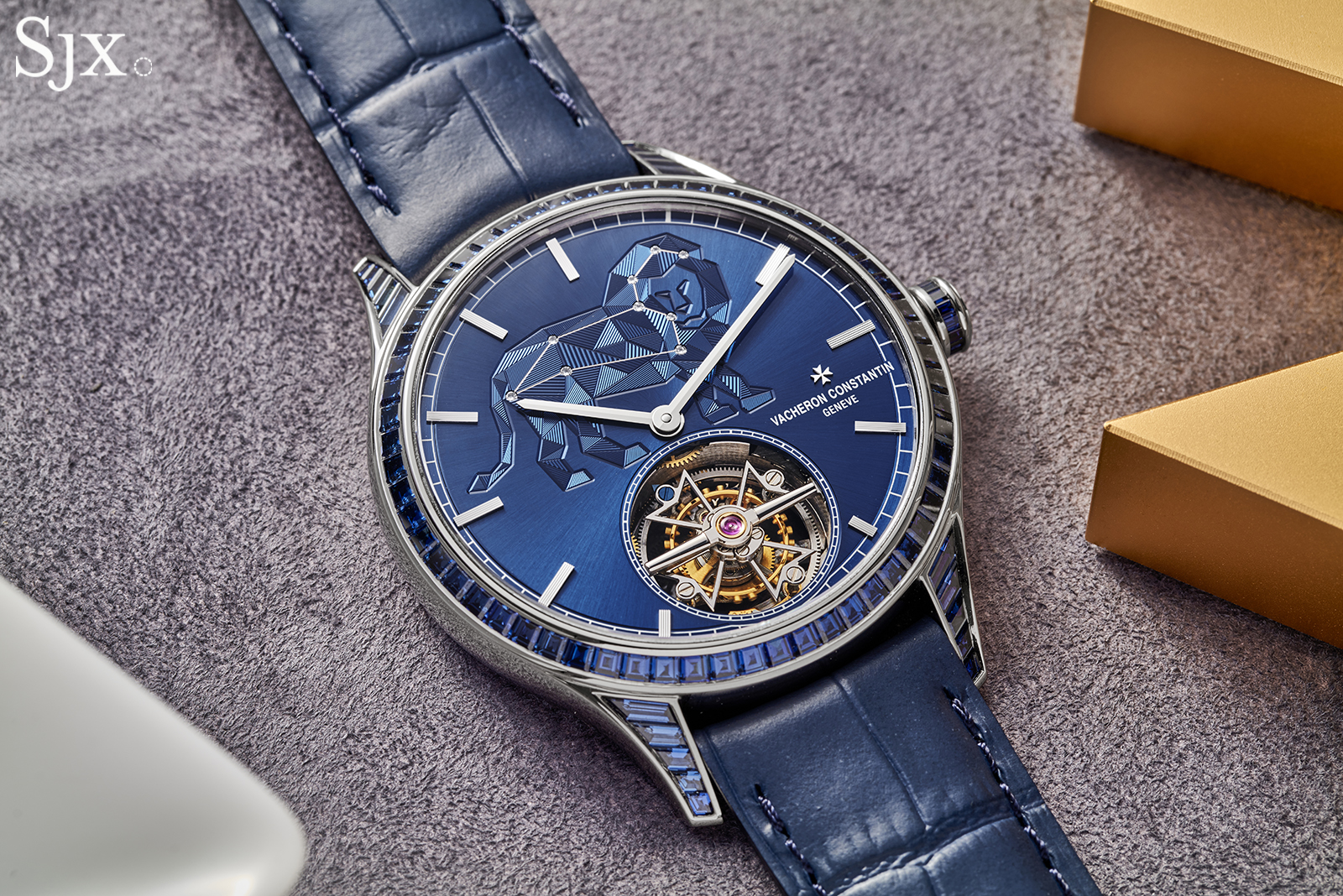
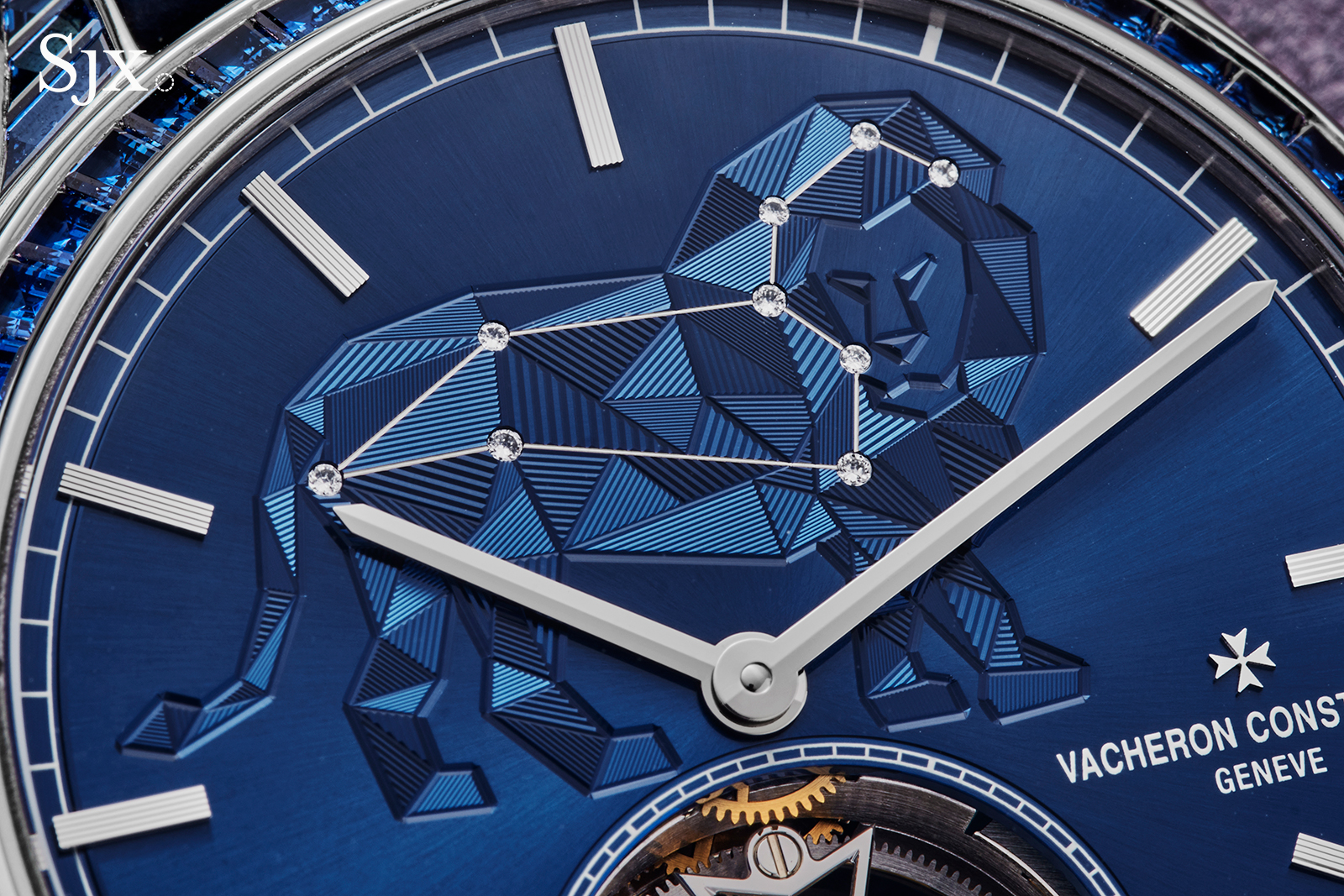
The case of the same style employed for other Metiers d’Art models, except here it’s been dressed up with baguette-cut sapphires. It’s a good size at 39 mm wide and almost 11 mm high, not too big and not too small, essentially just right.
The gemstones cover the bezel and top of the lugs, but also on the crown and buckle. The flanks of the case, however, are unadorned, which is a shame. Setting the case sides would have presumably raised the price significantly, so that is an acceptable compromise all things considered.
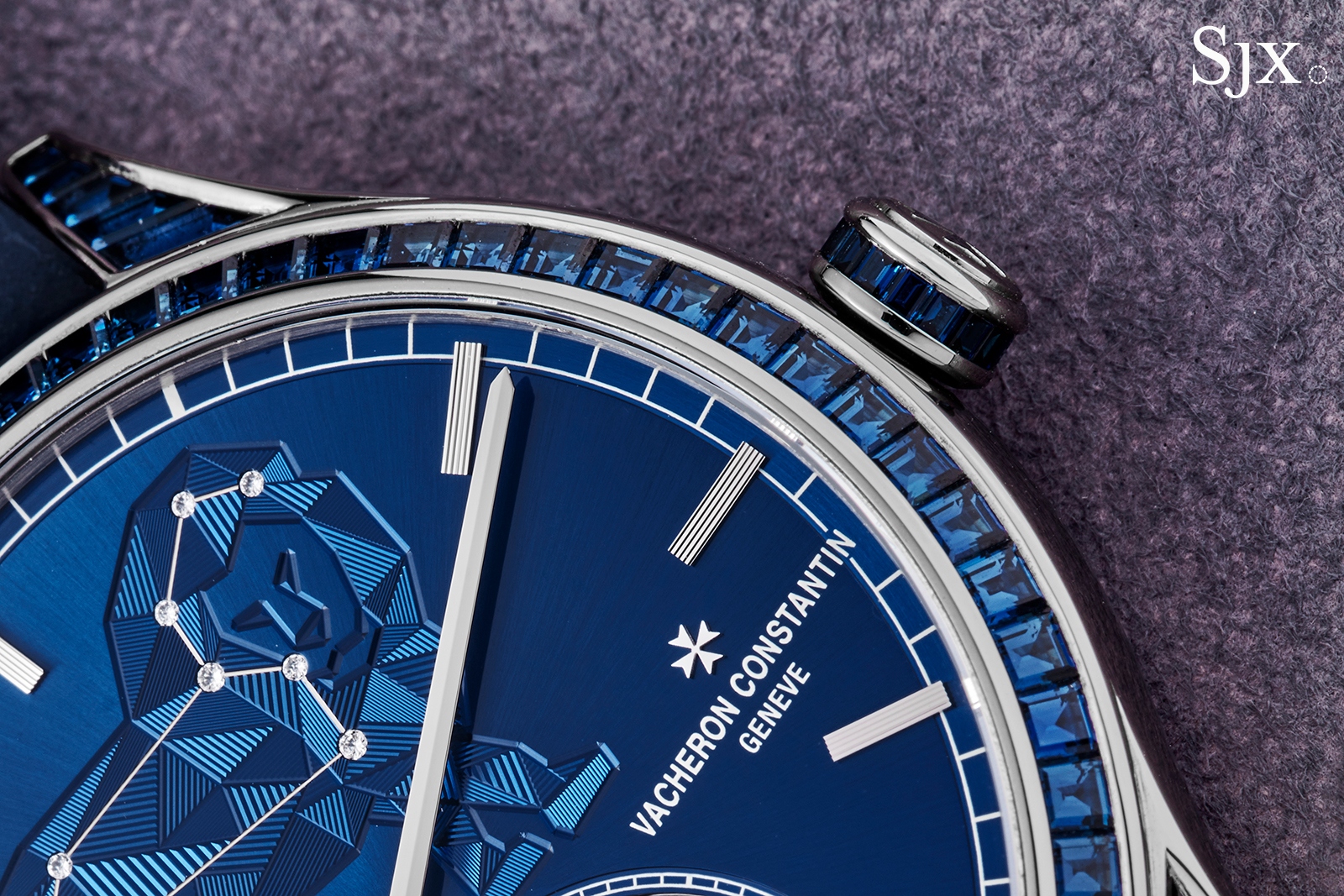

The cal. 2160 inside is a straightforward tourbillon movement, except for its winding mechanism. It features a peripheral winding mechanism that employs an arc-shaped weight in 22k to wind the barrel.
The automatic mechanism is also notable for having “Magic Lever” winding, a simple method of winding that is both efficient and flat. Originally invented by Seiko but now widely used by Swiss watchmakers, the Magic Lever occupies a fair amount of lateral space, but that’s not a constraint in a movement like this.
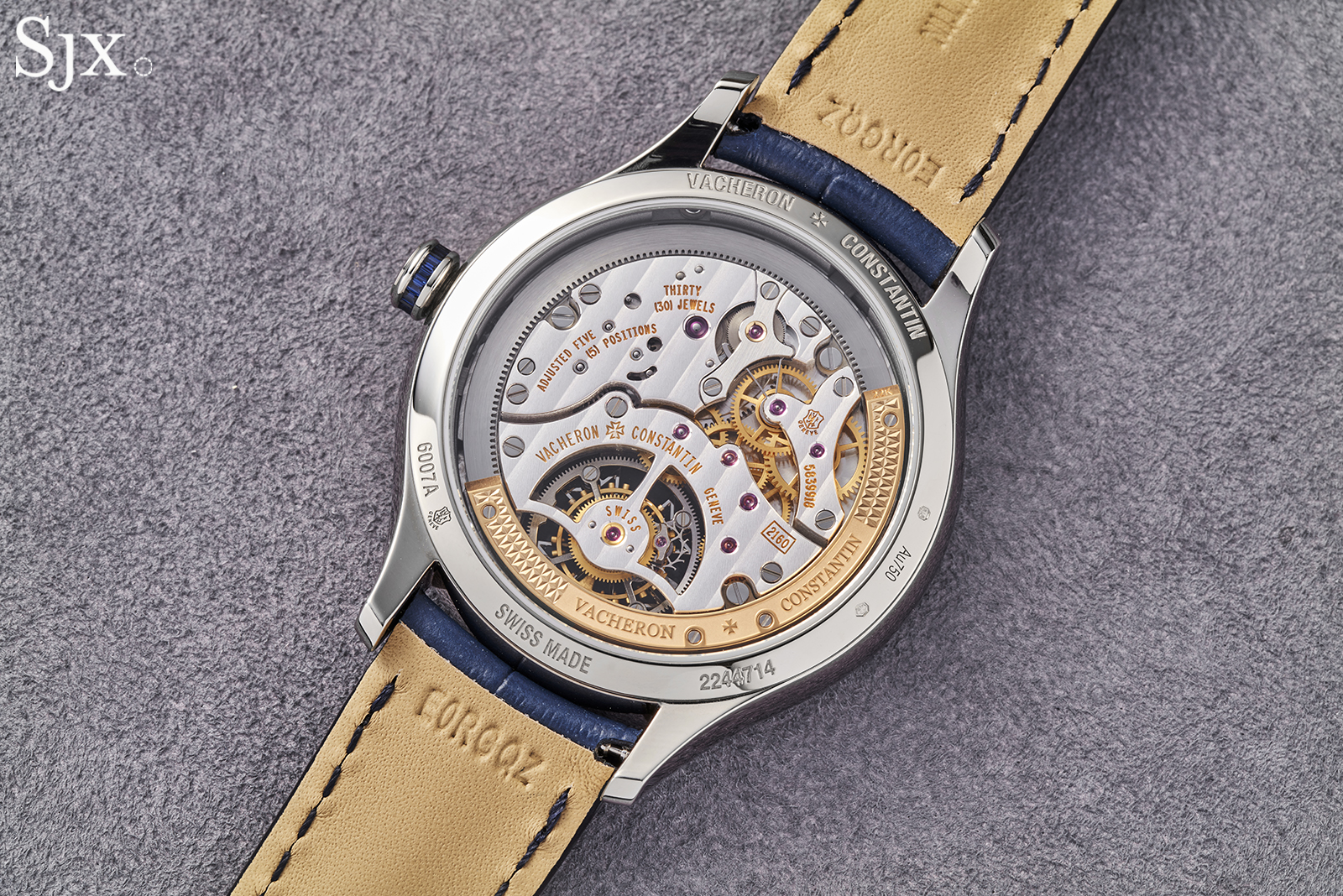
The automatic mechanism means a conventional rotor is done away with, leaving almost of the movement visible. The movement’s designers used this opportunity to give the cal. 2160 more interesting bridge shapes that have the flowing lines and angles more common on historical movements.
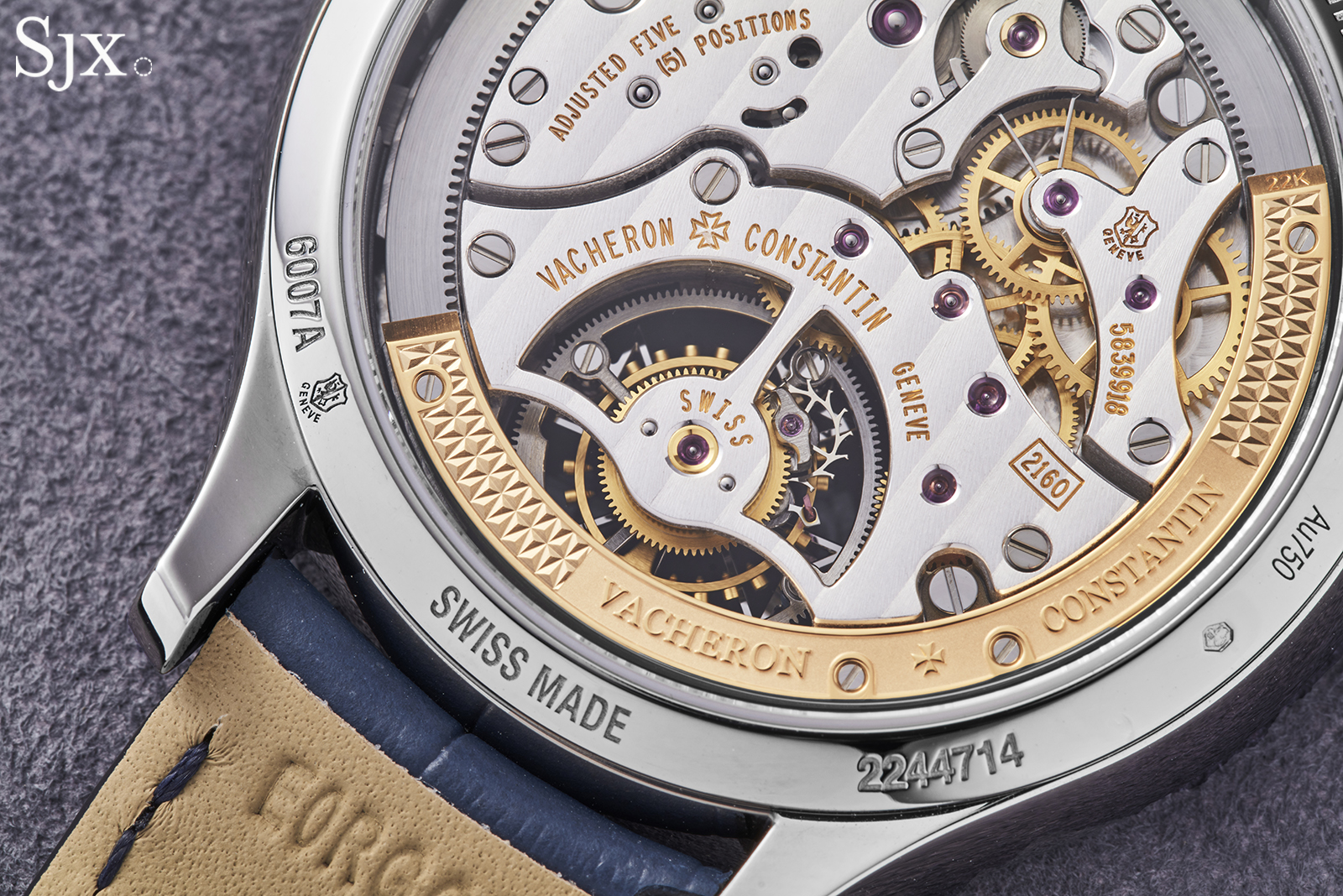
The 22k gold peripheral rotor is engine turned with a Maltese cross-inspired motif
The classical aspect of the movement is underlined by the Poinçon de Genève, a historical benchmark that was originally only concerned about aesthetics and decoration but now expanded to include useful, practical aspects like timekeeping and water resistance.
The Geneva Seal means that the finishing on the movement is excellent and thorough, with all of the details attended to. The quality of decoration is typical for this segment of industrial-haute horlogerie, and comparable to Patek Philippe, Audemars Piguet and the like.
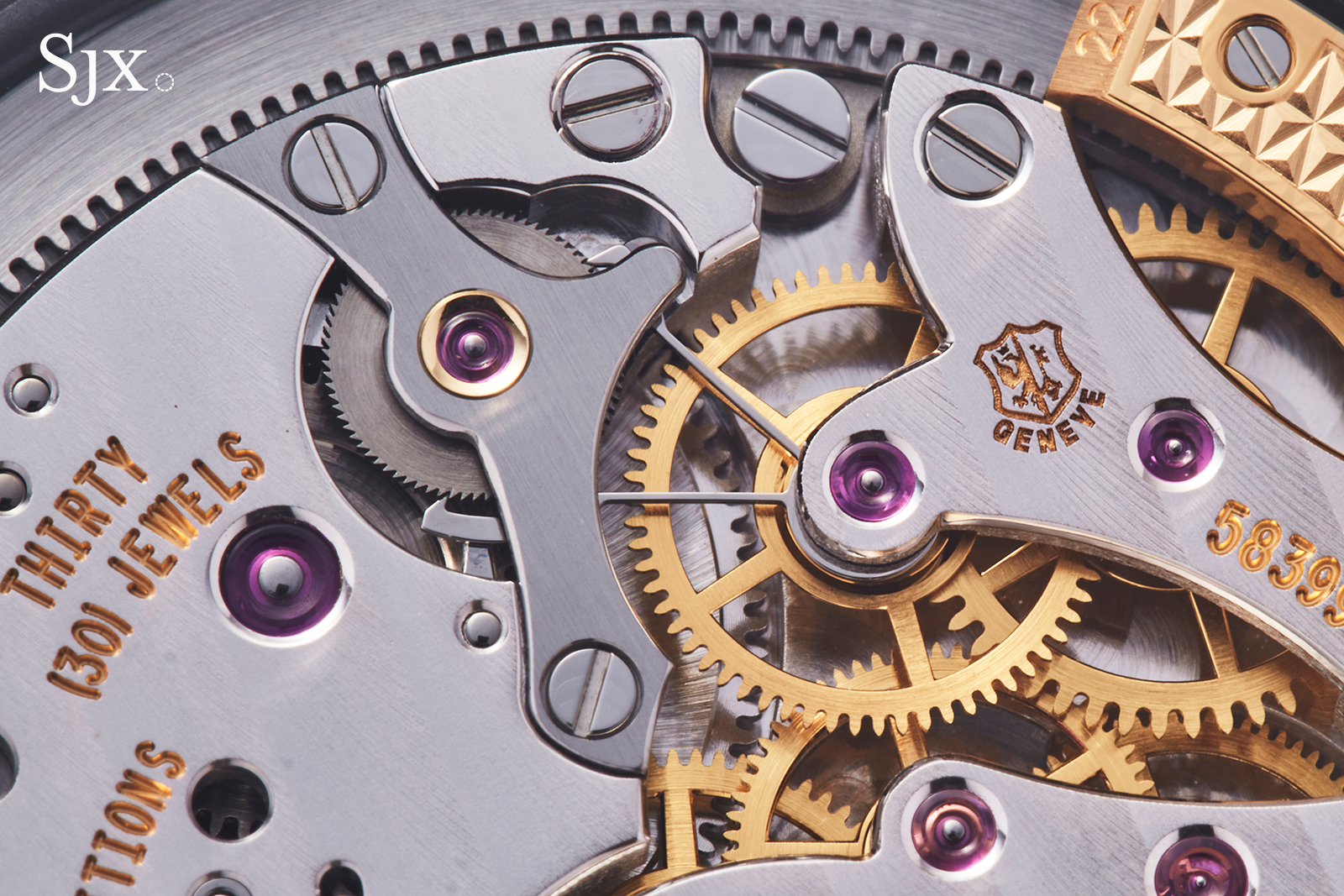
The Poincon de Geneve on the bridge for the Magic Lever
That said, the cal. 2160 a little of a missed opportunity in terms of decoration, especially since the movement styling can easily accommodate more decorative elements. This is all the more relevant since the Tribute to the Celestial is a higher-priced watch; the entry-level FiftySix Tourbillon, on the other hand, is perfectly acceptable with good-enough decoration. The inward angles along the bevelling, for example, could be sharper, while some of the flat steel parts could be black polished.
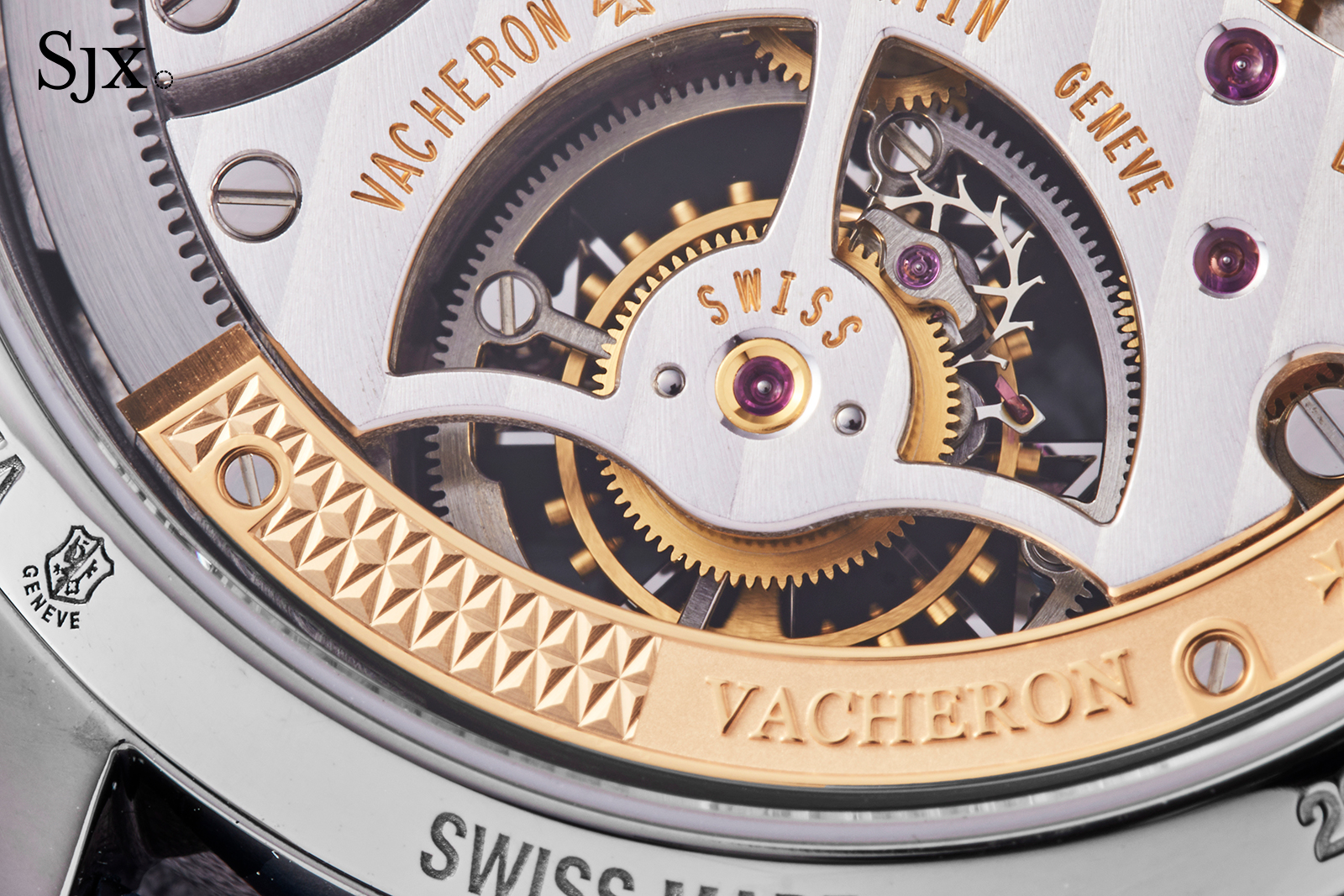
In fairness, however, the decoration on the front makes up for some of that. The detailing on the tourbillon assembly is outstanding. Take the Maltese cross-shaped tourbillon cage, which is about as good as it gets. The arms of the cage are black polished, with polished bevels containing inward angles, while the tourbillon bridge is rounded and mirrored.
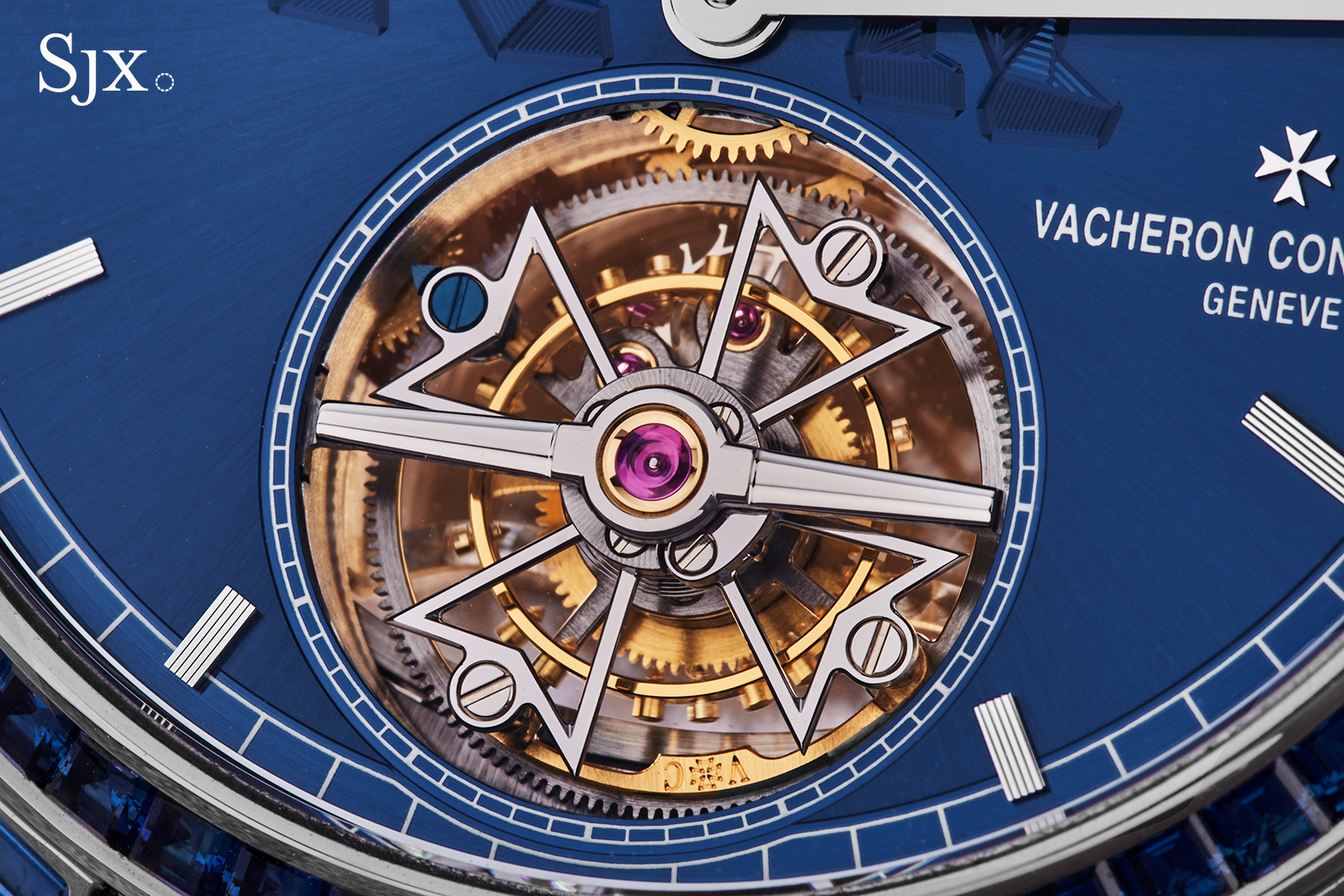
Concluding thoughts
The Tribute to the Celestial is not for everyone, but for the enthusiast who appreciates such things, it is done extremely well. The intrinsic attractiveness lies not only in the materials and decoration, but also the unusual aesthetics. The fact that the price is sensible – if a six-figure watch can be sensible – adds to the appeal.

Key facts and price
Vacheron Constantin Métiers d’Art “Tribute to The Celestial”
Ref. 96007A/000G-H042 to -H053 (12 references)
Diameter: 39 mm
Height: 10.7 mm
Material: 18k white gold, set with baguette-cut blue sapphires on bezel, lugs, and crown
Crystal: Sapphire
Water resistance: Not water resistant
Movement: Cal. 2160
Functions: Hours and minutes, tourbillon with seconds indicator
Winding: Automatic
Frequency: 18,000 beats per hour (2.5 Hz)
Power reserve: 80 hours
Strap: Alligator with folding clasp set with sapphires
Limited edition: No, but limited production
Availability: Only at Vacheron Constantin boutiques
Price: Approximately US$265,000
For more information, visit vacheron-constantin.com.
Back to top.


